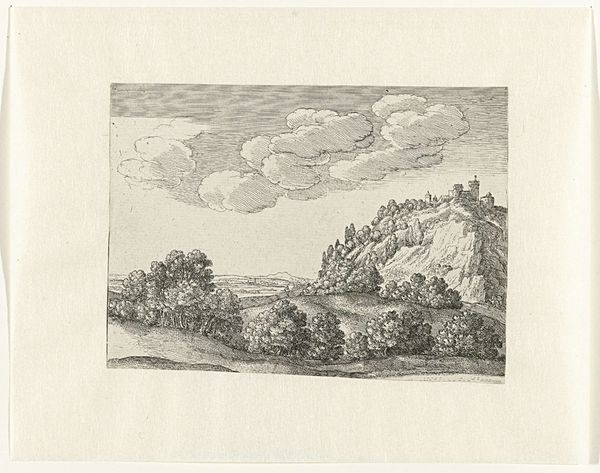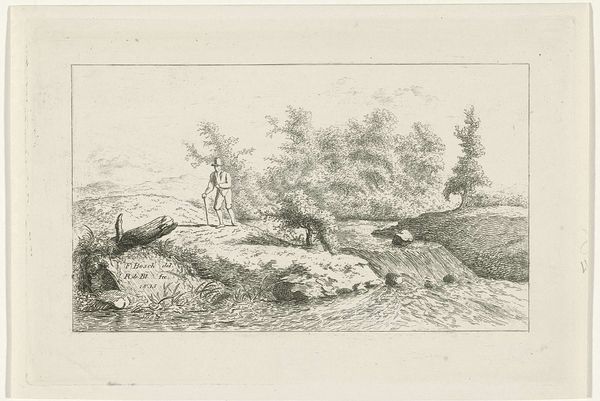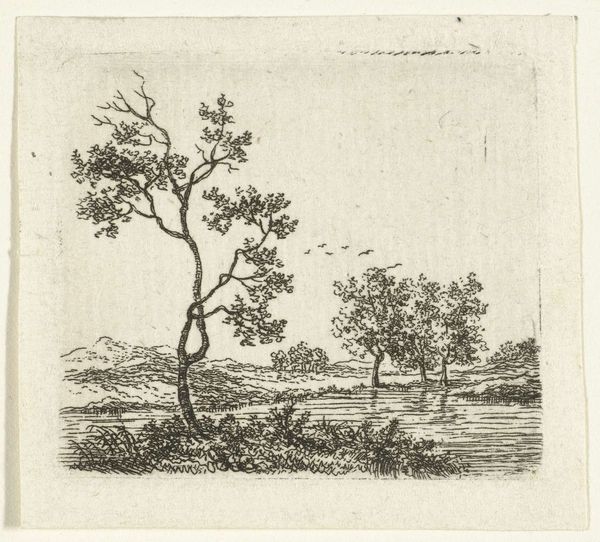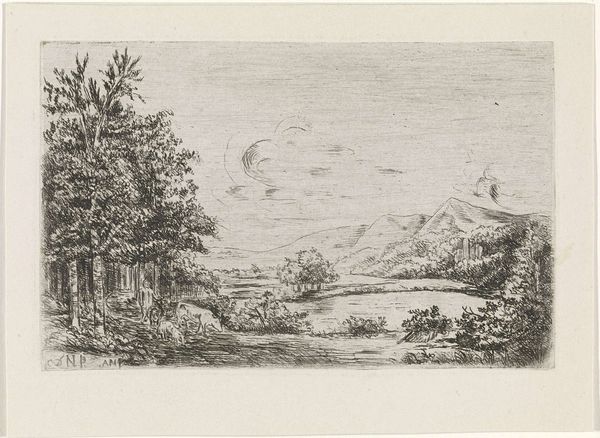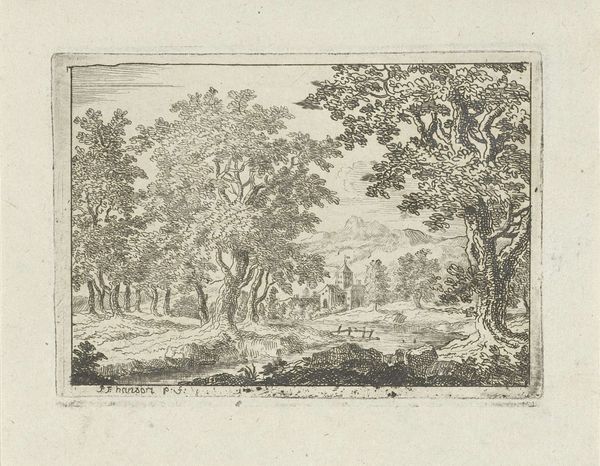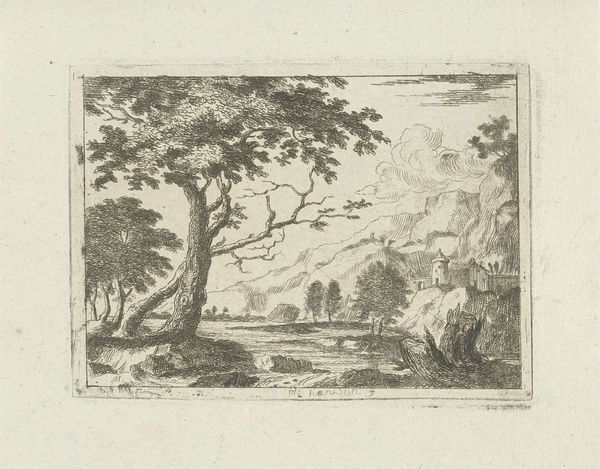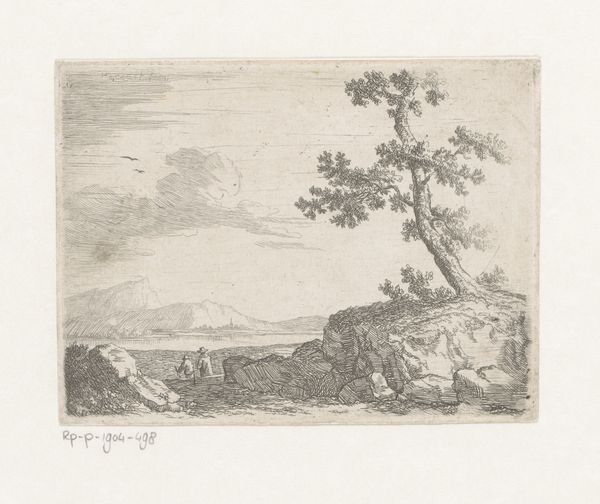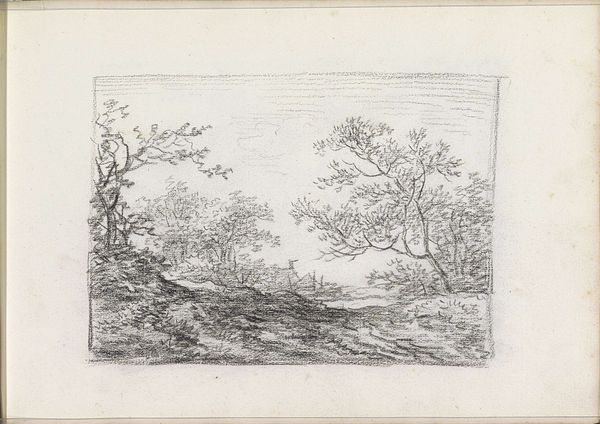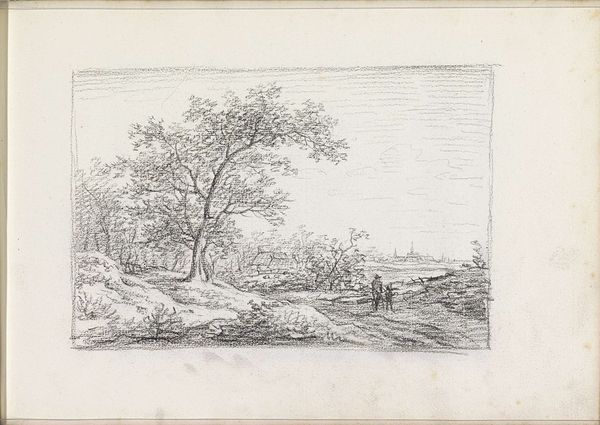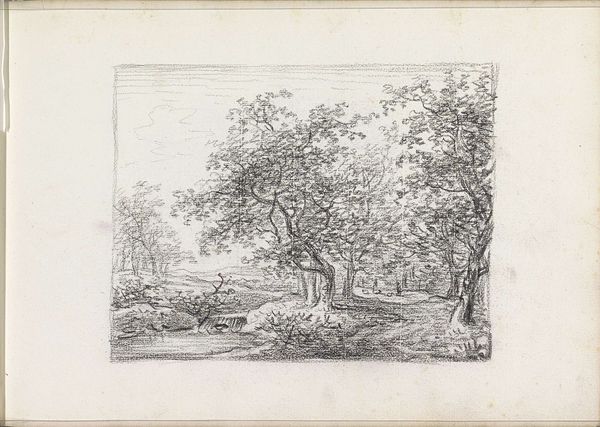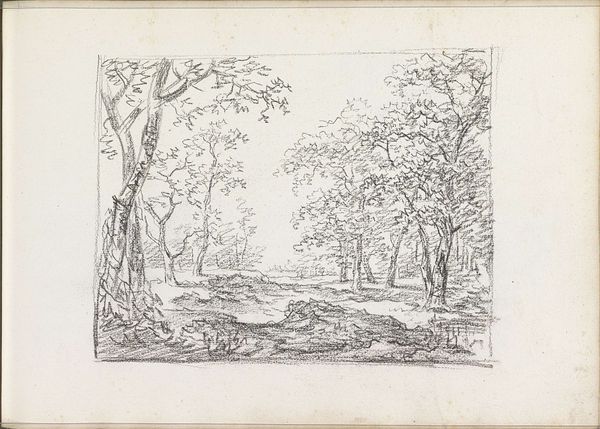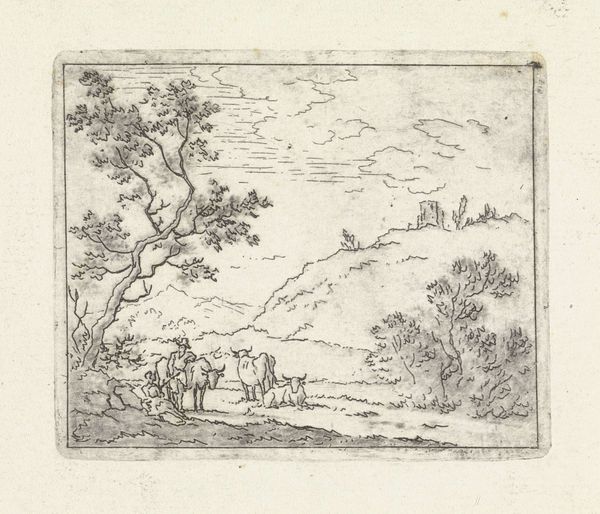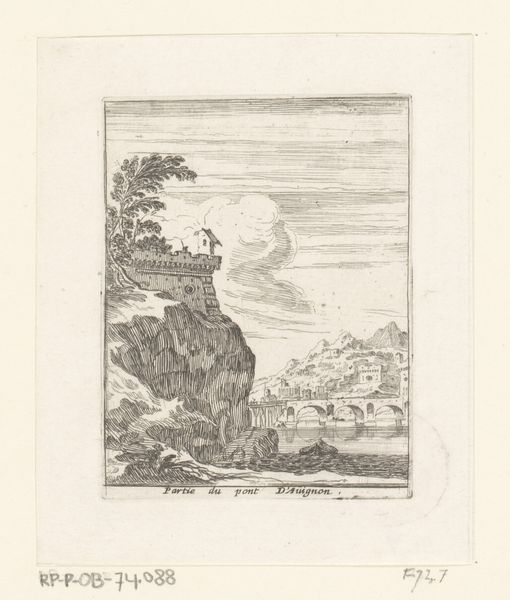
drawing, print, etching
#
drawing
#
baroque
# print
#
pen illustration
#
pen sketch
#
etching
#
old engraving style
#
landscape
#
personal sketchbook
#
sketchwork
#
ink drawing experimentation
#
pen-ink sketch
#
sketchbook drawing
#
storyboard and sketchbook work
#
sketchbook art
Dimensions: height 124 mm, width 166 mm
Copyright: Rijks Museum: Open Domain
Curator: Wenceslaus Hollar created this etching, titled “Landscape with Wagon Pulled by Horses,” sometime between 1625 and 1677. It's currently held at the Rijksmuseum. What’s your initial take on this seemingly simple landscape? Editor: There’s a stillness, a contemplative quality to it. The monochrome palette emphasizes the fine details, and the slightly raised horizon and large trees give the image a lot of weight. It almost feels cinematic in its breadth despite being an etching. Curator: It’s interesting you mention its “cinematic” feel because it seems that Hollar's wider body of work reflected the socio-political disruptions of the 17th century in Europe. While the landscape appears pastoral, we must think about land use, enclosures, and the labor connected to rural settings at that time. These sorts of works acted as a visual shorthand to comment on the hierarchies of wealth and power, where landowners and workers were negotiating social identities. Editor: Yes, and you see a little evidence of it in this one small image. You're drawn to the details of the horses and covered wagon traveling towards the hills, likely going from or toward larger market towns. What story do these workers hold? Curator: Exactly. Further contextualizing this landscape against, say, his cityscapes, could also highlight the tensions between urbanity and nature, which were points of anxiety for expanding capitalist societies. Editor: Do you think he intended for viewers to read these layers of social critique within what otherwise looks like an understated depiction of nature? Or do we burden the image with contemporary readings? Curator: That's the question, isn't it? Maybe both things are simultaneously true. Hollar gives us a picturesque scene, expertly rendered, but it also invites us to ask whose stories aren't being shown in the idyll. We can bring our theoretical lenses and find new narratives embedded within the artwork's surface. Editor: Precisely. By understanding the nuances of their time, artists unintentionally embed complexities that subsequent audiences can uncover through their own contextual frameworks. It is beautiful when the artworks become a nexus for thinking critically about history and our place within its progression. Curator: Absolutely. Each viewing can be an excavation of shared, or forgotten, histories. Editor: An intriguing work. Thanks for sharing your perspective.
Comments
No comments
Be the first to comment and join the conversation on the ultimate creative platform.
